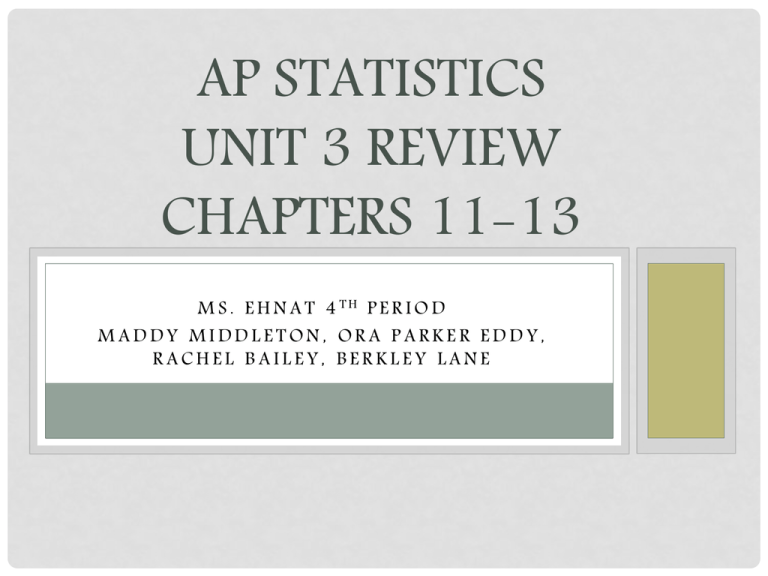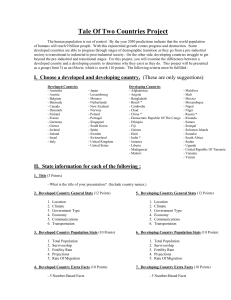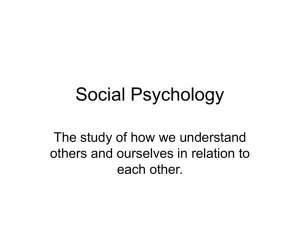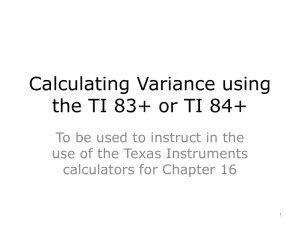Randomized - Comparative Experiments
advertisement

AP STATISTICS UNIT 3 REVIEW CHAPTERS 11-13 M S . E H N A T 4 TH P E R I O D MADDY MIDDLETON, ORA PARKER EDDY, RACHEL BAILEY, BERKLEY LANE OVERVIEW Chapters 11-13 are overall about gathering data. Chapter 11 is about understanding randomness, how to do simulations, and how to correctly produce random outcomes. Chapter 12 talks about sample surveys: what makes them up, the different kinds, blocking, and bias. A lot of vocabulary is introduced in chapter 12. Similar to chapter 12, chapter 13 has many new vocabulary words as well. Chapter 13 also addresses observational studies vs. experimental studies, retro and prospective studies, and how to correctly design an experiment. CHAPTER 11 • Simulations model a real-world situation by using random-digit outcomes to mimic the uncertainty of a response variable of interest. • Trials are the sequence of several components representing events that we are pretending will take place. • RANDOMNESS - No one knows the outcome. - Everything should be equally likely. CHAPTER 11 • An example when using a calculator: - Trying to get 5 different cereal toys in boxes of cereal. - In the calculator: RandInt(0, 5, 20) - 0-5 represents the different cereal toys. - 20 represents the number of boxes in each trial. - For each trial, record how many #s it takes to get a full set. • Another: - RandInt(1,6) - Random number between 1-6 that represents a simulation of rolling a dice. CHAPTER 11 • Random number tables have also been created for use during simulations. - Without a calculator, count the amount of numbers until receiving a full set of how many numbers you’re looking for. CHAPTER 12 • Population: All the individuals • Sample: Smaller group of individuals selected from population. • Sample Surveys ask small groups of people (opinion) questions that will hopefully represent the entire population. Randomly selected people!!! • Parameters: Numerically value of a model for population • Randomly selecting individuals creates an “on average…” answer. • BIAS!!! Not good to have when giving sample surveys. Does not give true representation of populations answers. SAMPLING TECHNIQUE I want to know if students cheat on their AP Stats tests. So, I need to conduct a survey! Which technique is best? SIMPLE RANDOM SAMPLE • Assign number to all students taking AP Stats • Randomly select 100 numbers and survey those students STRATIFIED RANDOM SAMPLE • Sample two students from every AP Stats class. Undercoverage or Overcoverage- inadequate representation of a population CLUSTER RANDOM SAMPLE • Select a random school and survey every student taking AP Stats at that school Bias: School selected could excel in the AP Stats arena or have very poor performance SYSTEMATIC SAMPLE • Stand outside of 6 AP Stats classrooms and survey every third student • Bias: The first ones out of the room finished faster and most likely cheated CONVENIENCE SAMPLE • Set up a table outside of testing room and ask students to take the survey about cheating; IT IS NOT MANDATORY! • Bias: students who cheat are not going to admit to cheating, especially if the survey is not anonymous Please tell me if you cheated! CHAPTER 13 • Observational Study • Researchers don’t assign choices; just observe • Retrospective- identify subjects, then collect past data • Prospective- identify subjects in advance, and collect data as they occur • Shows trends and possible relationships • Cannot prove cause and effect CHAPTER 13 • Randomized - Comparative Experiments • Proves cause and effect • Must identify at least one explanatory variable, a factor, to manipulate and a response variable to measure • An experiment: -manipulates factor levels -randomly assigns subjects to those treatments -compares the responses of the subjects groups across treatment levels CHAPTER 13 • Experimental Design • Control: make conditions as similar as possible for treatment groups • Randomization: allows us to equalize the effects of unknown variation • Replication: repeat the experiment • Use diagrams to visually display experiment groups. • Blocking(not required): used when groups of experimental units are similar. The differences caused by the treatments can be seen more clearly. Randomization occurs within the blocks. CHAPTER 13 VOCABULARY • blinding: used to avoid bias • placebo: fake treatment that looks like the treatment being tested (essential for blinding) • matching: reduces variability • confounding : two factors are confounded when the levels are associated with each other. • anecdote: the outcome of an experiment on a single subject • lurking: a lurking variable is thought of as a variable associated with both y and x that makes it appear that x may be causing y.







